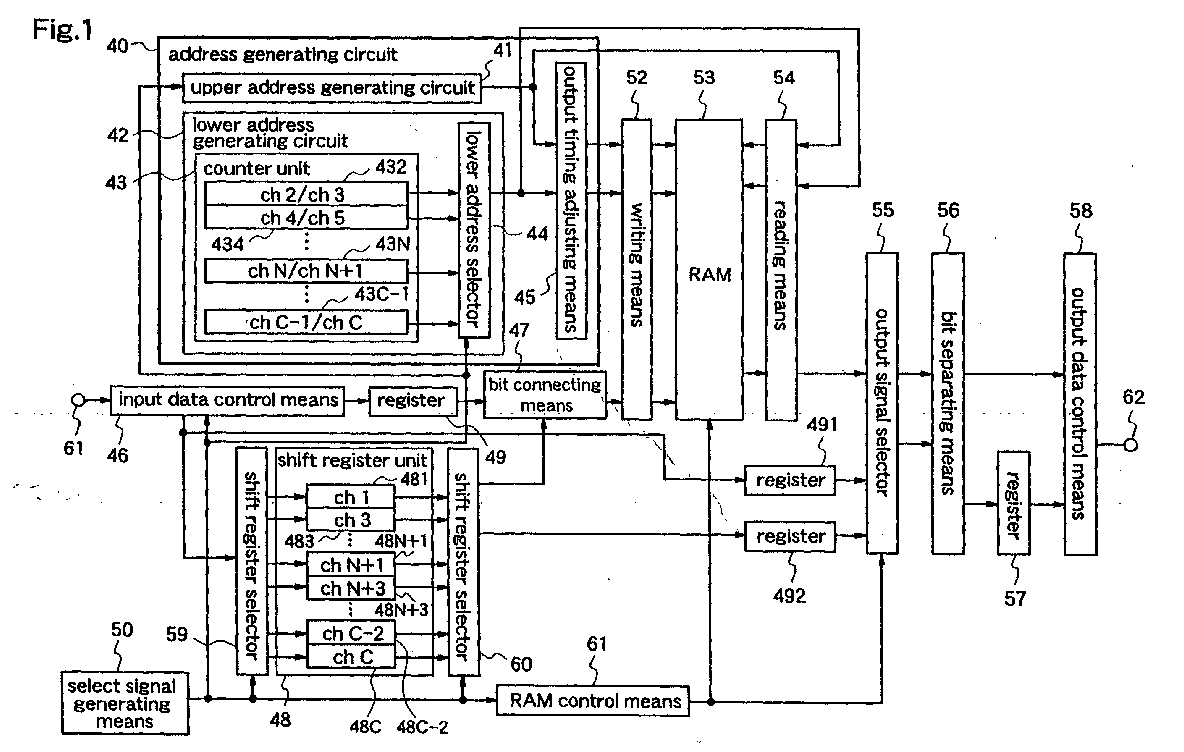(57) A convolutional interleaver performs convolutional interleaving for a data group
in which the input/output data width is b bits, the depth, i.e., the number of data
in bit width units, is m, the number of channels is n, and the maximum channel number
is C (n = integer satisfying the relation 0≦n≦C, b,m,C = natural numbers). This interleaver
includes a delay unit comprising first and second delay units and performing a delay
of nT for data of the n-th channel (T = a predetermined amount of delay, T>0). The
first delay unit performs a delay of iS (S = a predetermined amount of delay, 0<S≦T)
for the i-th group amongst groups into which all the channels are grouped such that
each group comprises at most k channels, and the second delay unit performs a delay
equivalent to a deficiency in the delay of the first delay unit for the delay of nT
to be given to the data of the n-th channel. Therefore, delays to be commonly generated
between channels in each group are generated together by the first delay unit, and
delays including differences in delays between the channels are individually generated
by the second delay unit, whereby control and structure of the delay means can be
simplified.
|

|
